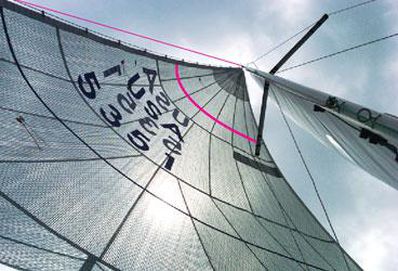

Sail Trim Rules of Thumb by good friend David Dellenbaugh www.speedandsmarts.com
One objective when you’re out sailing is to trim your sails efficiently so you get the best performance from your boat. To do this, it’s helpful to have some quick, dependable sail trim references. These will give you maximum performance with a minimum of effort.
Mainsail – Upwind
1) End of boom near the centerline — Trim the main in all the way so the end of the boom will be somewhere between the boat’s centerline and the leeward corner of the transom.
2) Top batten parallel to boom — When the main is trimmed, the top batten should be roughly parallel to the boom. You can gauge this by sighting up from under the boom. If the batten hooks to windward, ease the mainsheet. If it falls off to leeward, trim the sheet.
Mainsail – Downwind
1) Ease the sail until it luffs along the mast — You’ll get optimum downwind performance if you ease your main as far as possible. Ease the sheet until you see a bubble along the luff of the main, then trim it in slightly.
2) Vang tight enough so boom is horizontal — If it’s windy, pull on your boom vang so it keeps the boom roughly horizontal and the upper batten parallel to the boom.
3) Telltale on top batten just flowing — Another good guide for downwind trim is to use the telltale (if you have one) on the end of the top batten. You want this telltale to fly as much as possible; if it’s curling around behind the sail, try easing your vang or mainsheet a little.
Jib – Upwind
1) Middle batten parallel to centerline — Just like the main, the jib should be trimmed in all the way for sailing upwind. If you have battens along the leech of your jib, you want these roughly parallel to the boat’s centerline.
2) Slot between main and jib has an even, consistent curve — When you look at the “slot” from the stern of your boat, you should see similar curves in both the main and jib. If you don’t, try moving the jib lead athwartships.
3) Telltales flutter simultaneously from top to bottom — The fore and aft position of the jib lead is important for top performance. Ideally, the telltales along the luff of the jib should all move simultaneously. If the top telltales flutter first, move your jib lead forward, and vice versa.
Jib – Downwind
1) Don’t fly jib and spinnaker simultaneously — On most boats, you should drop the jib so it won’t take wind away from the spinnaker. This is more important in light air than heavy air.
2) Ease sail until telltales start to break — If you don’t set a spinnaker, ease the jib as far as possible until the windward telltales start to flutter or the front of the jib begins luffing.
3) Move jib leads farther outboard (or “wing” the sail) — The jib leads should be as far outboard as possible for downwind sailing. If you’re on a run, you can “wing” the jib to the windward side to help keep it filled.

